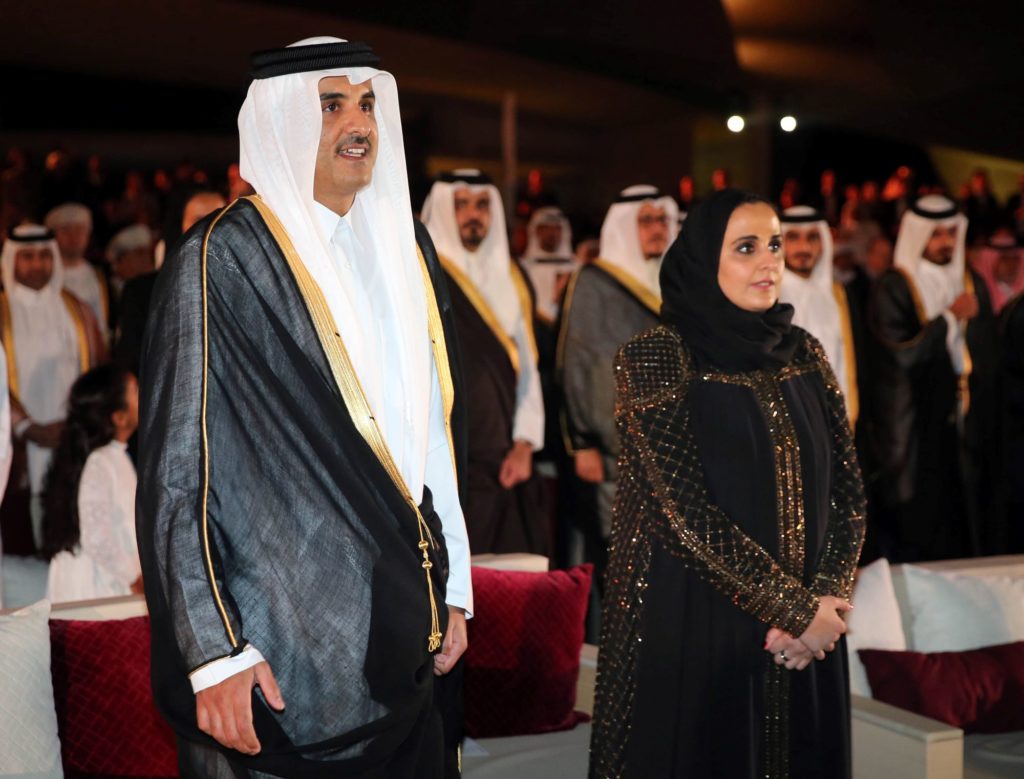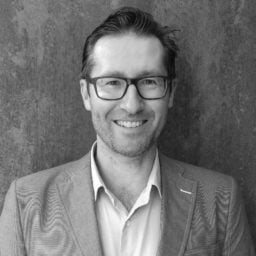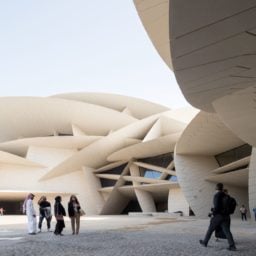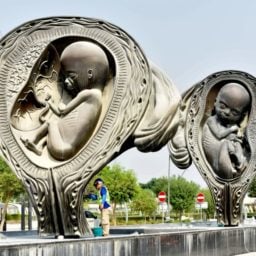The celebs and glitterati assembled in Doha last week for the launch of the city’s supersized Jean Nouvel-designed National Museum of Qatar. The opening—which was overseen by the Qatari Emir, Tamim bin Hamad Al Thani, and his sister, Sheikha al Mayassa bint Hamad bin Khalifa al Thani, the chair of Qatar Museums—saw a great gathering of heavyweight museum directors, star architects, and leading artists. Many took part in the Qatar Creates summit, a series of panel discussions emphasizing how the tiny gas- and oil-rich nation punches above its weight on the world art stage. Largely congratulatory, the talks yielded some insights and even a few surprises. Here are five key takeaways and talking points on and off stage.
Jeff Koons Could be a World Cup Contender
Who knew Jeff Koons was a soccer fan? Last week, the US artist enjoyed an exclusive hard-hat tour of one of the stadiums Qatar is building to host the 2022 FIFA World Cup. And he wasn’t alone: on the Instagram page of Paul Schimmel, the former MOCA Los Angeles curator (and briefly a partner at Hauser & Wirth), the two appeared together smiling in a warm embrace. (The post did not include where they met but the stadium that they were admiring looks like the Norman Foster-designed ground in Lusail City where the World Cup final will be played. With seven stadia nearing completion in and around Doha, it is hard to tell.)
So is Jeff Koons building a work for the arena? In the land of non-disclosure agreements, no one was willing to confirm or deny the possibility. But when it comes to public art, Qatar is already in a league of its own in the region, boasting large-scale sculptures by Richard Serra, Louise Bourgeois, Damien Hirst, and KAWS, among others.
During a panel discussion on the opening day of the National Museum of Qatar, Koons shared the stage with fellow artists Olafur Eliasson, Philippe Parreno, Doug Aitken, and the up-and-coming Qatari artist Ghada al Khater. Although artnet News asked each speaker whether he or she would jump at the chance to make a work for Qatar’s World Cup, moderator Tom Eccles chose not to toss the ball to Koons. (Eliasson, Parreno, and Aitken told us they had not received a call up to create a World Cup commission, but Koons’s studio, Eccles, Schimmel, and Qatar Museums did not respond to subsequent requests for clarification or confirmation.)
Still, Eliasson did reveal a novel idea to create a level playing field at the World Cup: why not drop the hyper nationalism of the event by having every team play entirely incognito? Expert judges could pick the World Cup winners based on footballing merit alone, he told the audience. “It would be an artwork about fairness,” the artist tells us. “To be honest, I think this would be a beautiful game but I might be alone in having this view,” he says. “I would of course be severing the strong ties of identification between the teams as their supporters.”
The Biggest Modern Art Museum in the World?
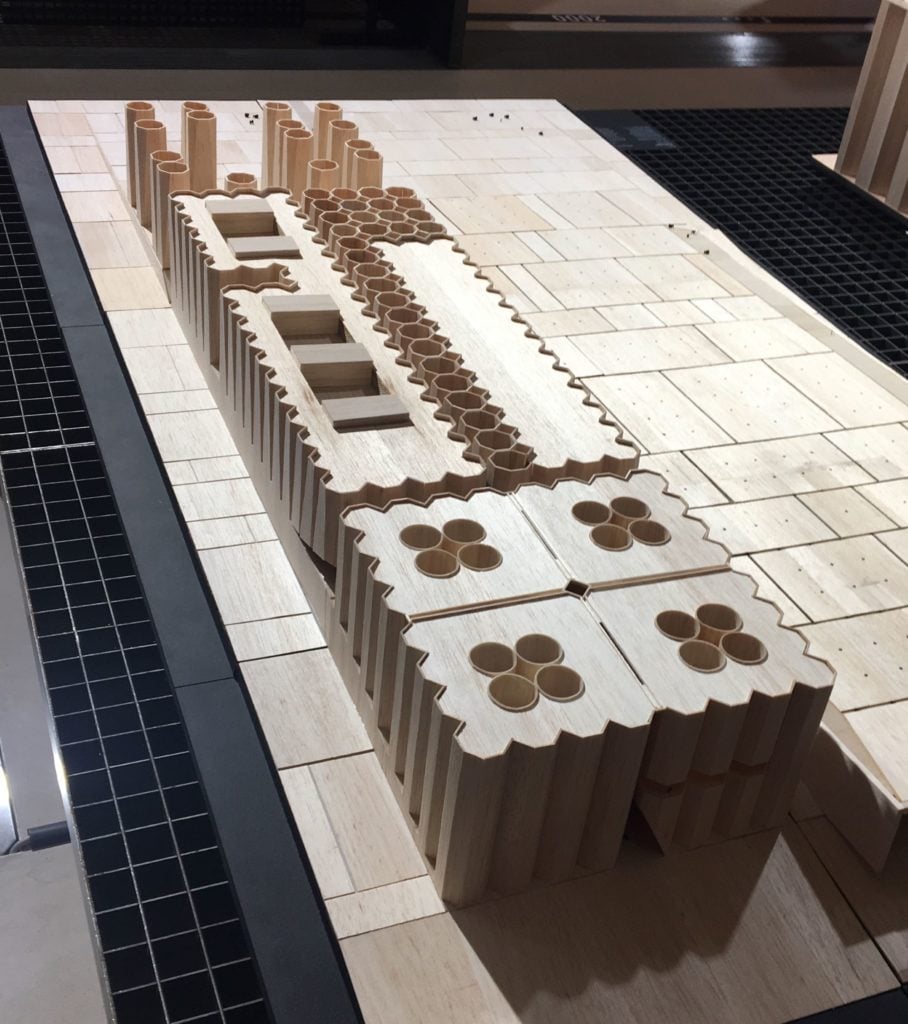
Architect Elemental’s prize winning design for the vast Art Mill of Modern and contemporary art in Doha. Photo by Javier Pes.
Museums have long been in a space race—MoMA versus Tate Modern, the Hermitage versus the Louvre—but nowhere is the “more is better” ethos more obvious than in the Gulf. When it comes to financial competition, none of the aforementioned can compete with Qatar Museums’s acquisition budget, which at one point was reported to be a billion dollars—just for 2013.
Although constructing seven world-class soccer grounds in double-quick time has been the focus in the lead-up to 2022, a home for Qatar’s blue-chip Modern and contemporary art is on the horizon. In the National Museum of Qatar’s inaugural temporary exhibition, visitors can see models for Pritzker Prize-winning architect Alejandro Aravena’s proposal to convert huge flour silos and a still-functioning mill in the old port of Doha into the vast Art Mill, a future home for Qatar’s burgeoning but rarely revealed Modern and contemporary art collection. Measuring more than 800,000 square feet, the complex will be more than twice the size of Tate Modern, even including the Turbine Hall. And it would nearly double the footprint of Frank Gehry’s Guggenheim Abu Dhabi, the region’s rival behemoth, which is still on the drawing board. If built, that one would would measure “only” 450,000 square feet.
Another model, this time of Herzog and de Meuron’s masterplan for Doha’s waterfront, shows how the city’s vast Corniche Park could more than double in size. The green space dotted with public art will link I.M. Pei’s Islamic Museum of Art, Nouvel’s National Museum, and—one day—Aravena’s Art Mill.
A Museum Director’s Job Is Not a Happy One
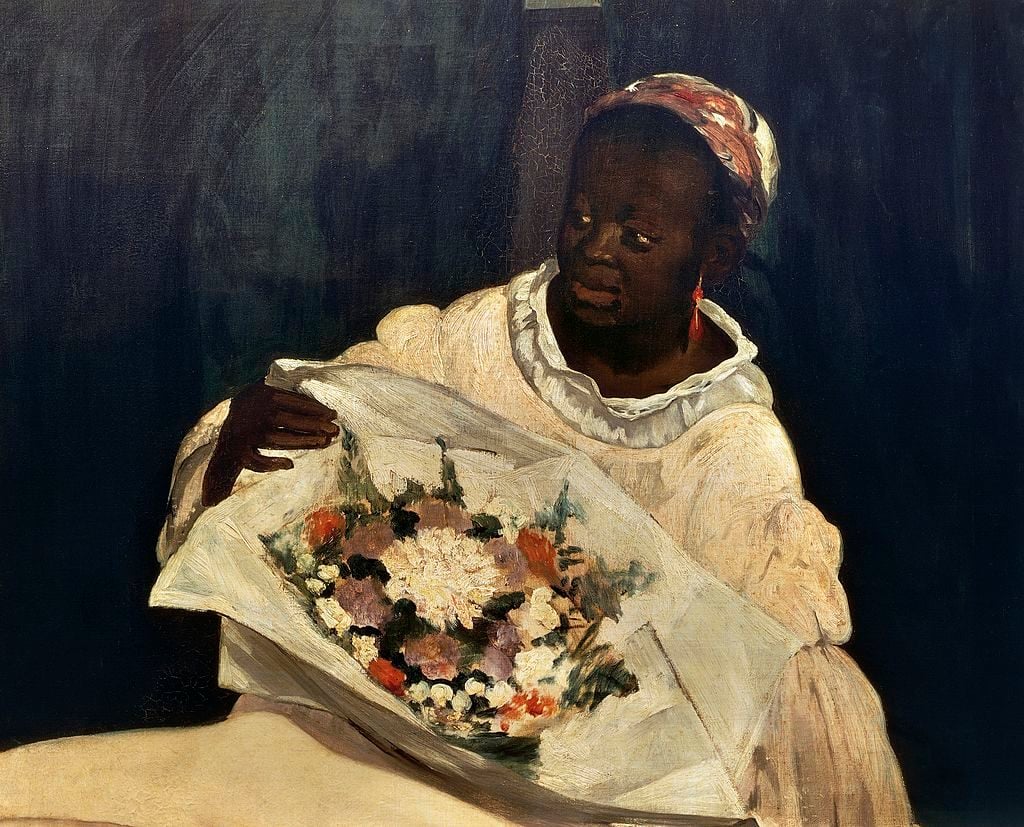
The black maid in Eduard Manet’s Olympia (1863). Photo by DeAgostini/Getty Images.
In the age of outrage, you would hope a few days in Qatar would be the equivalent of a luxury spa for an international museum director. But the Whitney Museum’s Adam Weinberg, who took part in the culture summit in Doha, is in the firing line. There is a new demonstration almost every week on his institution’s doorstep—and increasingly, in the lobby. Off stage, fellow museum directors in Qatar provided an informal support group and sympathetic ear, artnet News learned. Weinberg certainly found a receptive audience at the National Museum when he made an impassioned appeal for museums as “safe spaces for unsafe ideas.” Without naming any protest groups by name, Weinberg said: “We can fight, we can protest, and at the same time be respectful and understanding. That is a hard thing to do.”
The director of the Musée d’Orsay, Laurence des Cars, revealed that she woke up in Doha to learn of a brouhaha back home about a supposedly good-news story. She had to clarify exaggerated and inaccurate media reports that Manet’s Olympia had been temporarily “renamed” after the black model who posed as a maid for the French artist. The story had a happy ending: Des Cars announced that a version of the Musée d’Orsay’s groundbreaking exhibition “Black Models: From Géricault to Matisse” will travel to the French Caribbean island of Guadeloupe in the fall. She told artnet News that Olympia could might make a rare outing from her Paris home. The museum was researching suitable air transport for the famous painting of female empowerment, so Olympia‘s place on the Guadeloupe exhibition list was still to be confirmed.
From Russia With Love
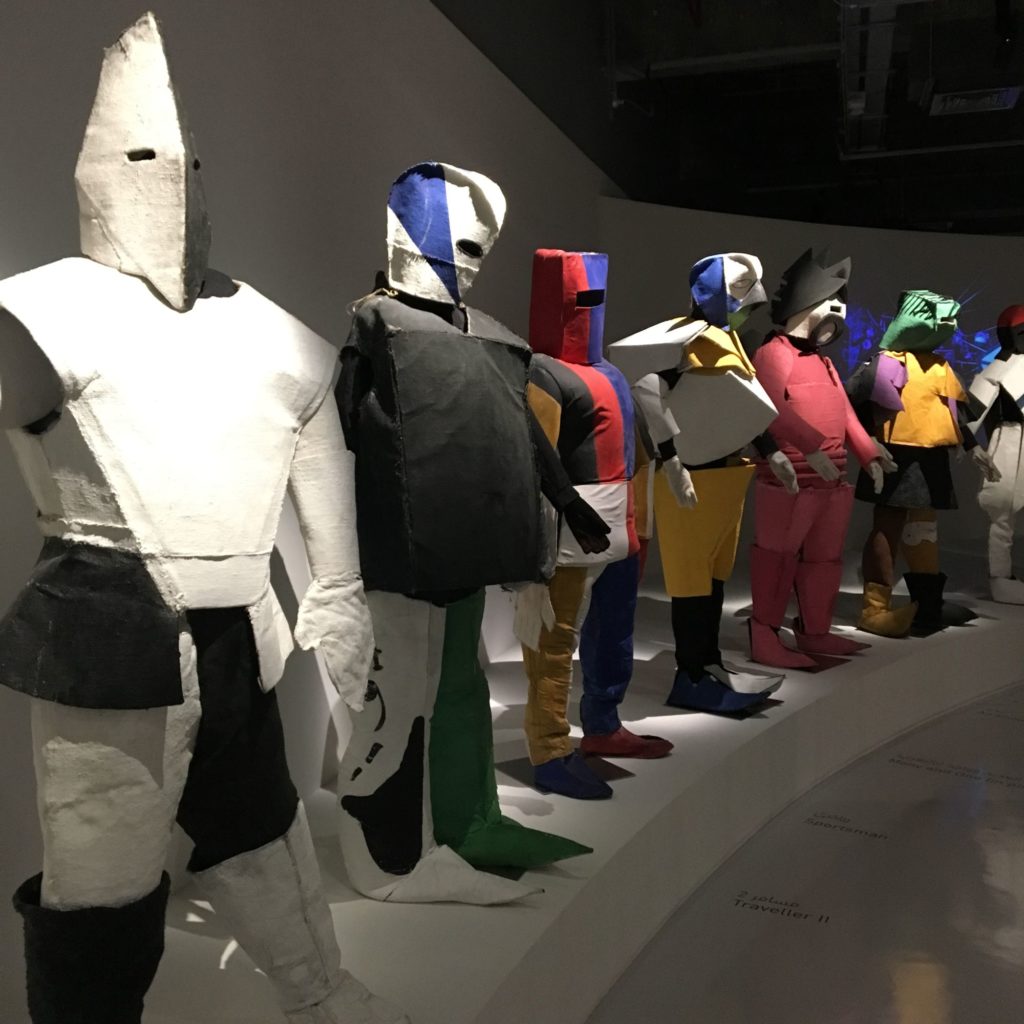
Victory Over the Sun (1913) reconstructed opera costumes. State Russian Museum. Photo by Javier Pes.
The museum opening and cultural summit underscored how Qatar has learned to deploy soft power, unlike its bigger and more aggressive neighbor, Saudi Arabia, which is currently leading a blockade of Qatar. Perhaps for that reason, the Saudis chose Qatar’s big day last Wednesday to announce that it, too, was “open for culture,” although how many artists will jump on Crown Prince Mohammad bin Salman’s invitation remains to be seen. In the geopolitical game of cultural diplomacy, Qatar Museums is an increasingly powerful player, whereas the Crown Prince of Saudi Arabia seems to be one of the art world’s biggest off-stage villains.
Meanwhile, Qatar, because of its position, is able to borrow works from Russia that Adam Weinberg can only dream of showing until US-Russia relations improve drastically. (There have been no loans between the superpowers’ great art museums since 2011.) The exhibition of Kazimir Malevich’s work at the Fire Station Museum in Doha, part of the Russia-Qatar Year of Culture (and the reciprocation of exhibitions presented by Qatar in Moscow last fall) would be a surefire blockbuster at MoMA, the Met, or any other major US museum.
All the works on show, including the artist’s death mask, come from the State Russian Museum in St Petersburg and star loans include a Red Square of 1915 through late works painted in a figurative style to appease Stalin in the early 1930s. (Malevich never never totally abandoned the square, sneaking one in as the side of a house, or peasants’ skirts in two late landscapes.)
The Hermitage’s longstanding director, Mikhail Piotrovsky, who spoke at the opening of the National Museum of Qatar alongside Weinberg, recently met MoMA’s Glenn Lowry in Dallas to find a way through the impasse. artnet News learned that Pitrovsky plans to be back in the US in the fall to maintain US-Russia cultural relations. Speaking in Qatar, the philanthropist Maja Hoffmann called for a “Cultural Davos.” Qatar, with its reputation as the Switzerland of the Middle East, seems an ideal place.
You Ain’t Seen Nothing Yet
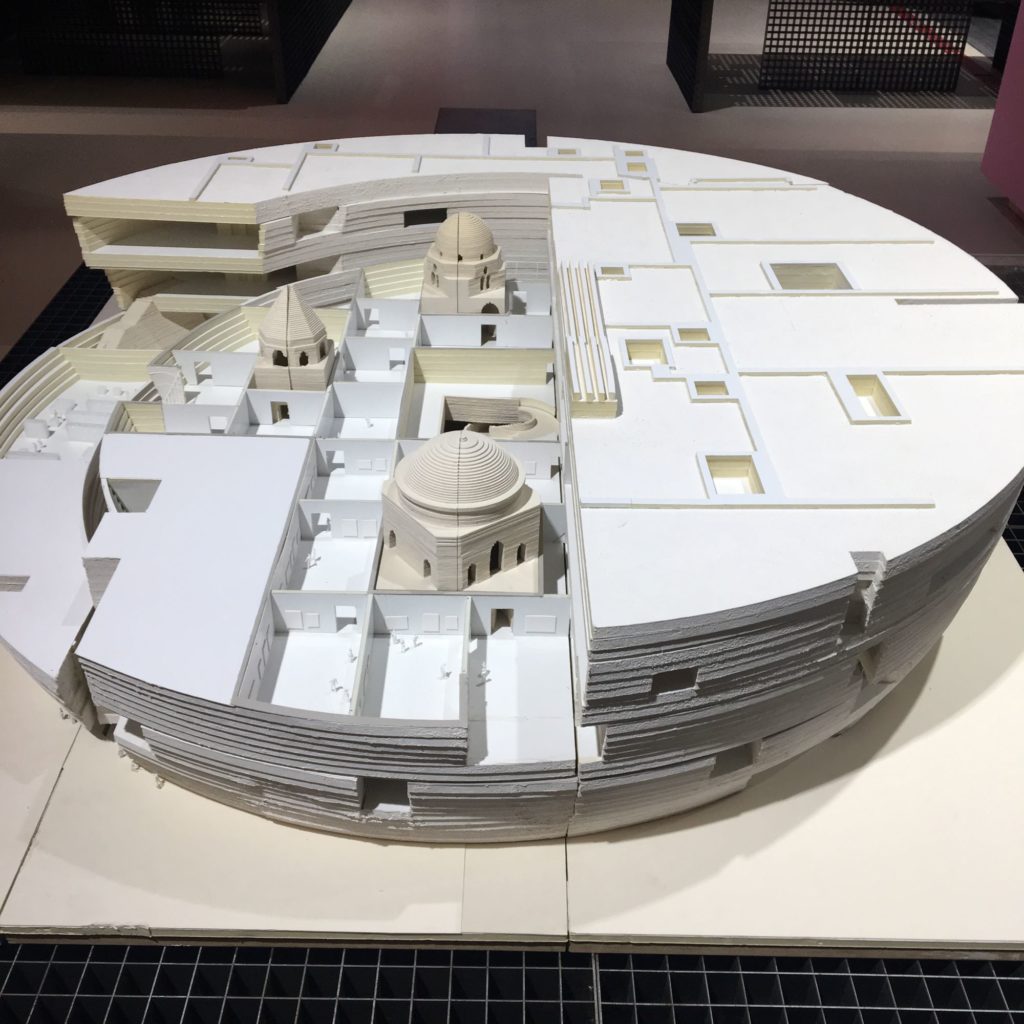
Model for proposed mega museum in Qatar designed by architects Herzog & de Meuron. Photo by Javier Pes.
And there is more on the horizon for Qatar Museums, which is building a network of world-class institutions to create the Gulf version of the Smithsonian Institution. A sporting museum is due next over the finishing line, with an opening scheduled for 2020 to ramp up for the 2022 World Cup. In the meantime, the National Museum’s inaugural exhibition, “Making Doha,” reveals the country’s range and ambition. The show, which charts the city’s explosive growth since the 1970s, is accompanied by a handy guide to the buildings and infrastructure Qatar has commissioned. Who knew the late Zaha Hadid designed a Guggenheim Hall Doha in 2003?
In the exhibition, a section on Doha of the future has intriguing visuals and models, including a Rem Koolhaas/OMA-designed Art Bank, where masterpiece paintings appear to hang from a moving overhead rail so they could trundle past viewing windows. (An architect’s fantasy, the risk of damage to the canvases by vibration would be a conservator’s and curator’s nightmare.)
It remains to be seen whether Herzog and de Meuron will see their planned mega-museum rise north of Doha. There are conceptual models on show of a humongous circular building that the labels say is a museum in Lusail City, a Doha satellite to the north.
The co-curator of the exhibition, Samir Bantal of OMA, said that Jacques Herzog intended the building to house Qatar’s Orientalist collection, plus a presidential standard hotel. It appears to contain replica historic mosques, and as many galleries as Tate Modern after its recent expansion. The project is on hold, but if the stars align, and the Emir gives it his blessing, it would as big as Foster’s Lusail football stadium. Only in Doha.
